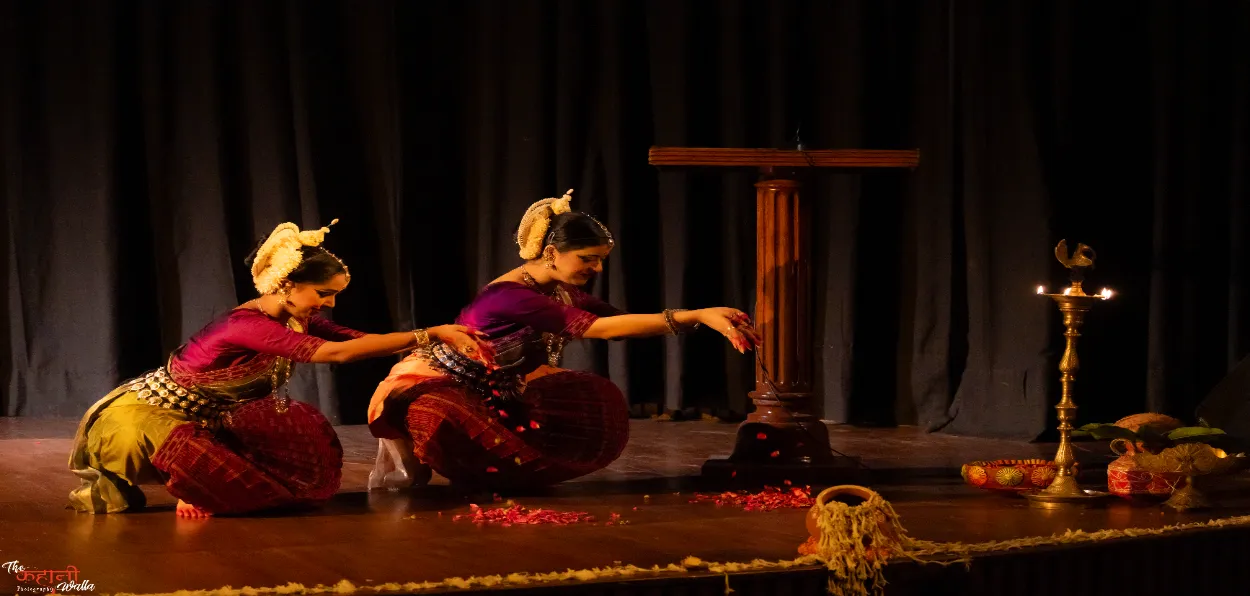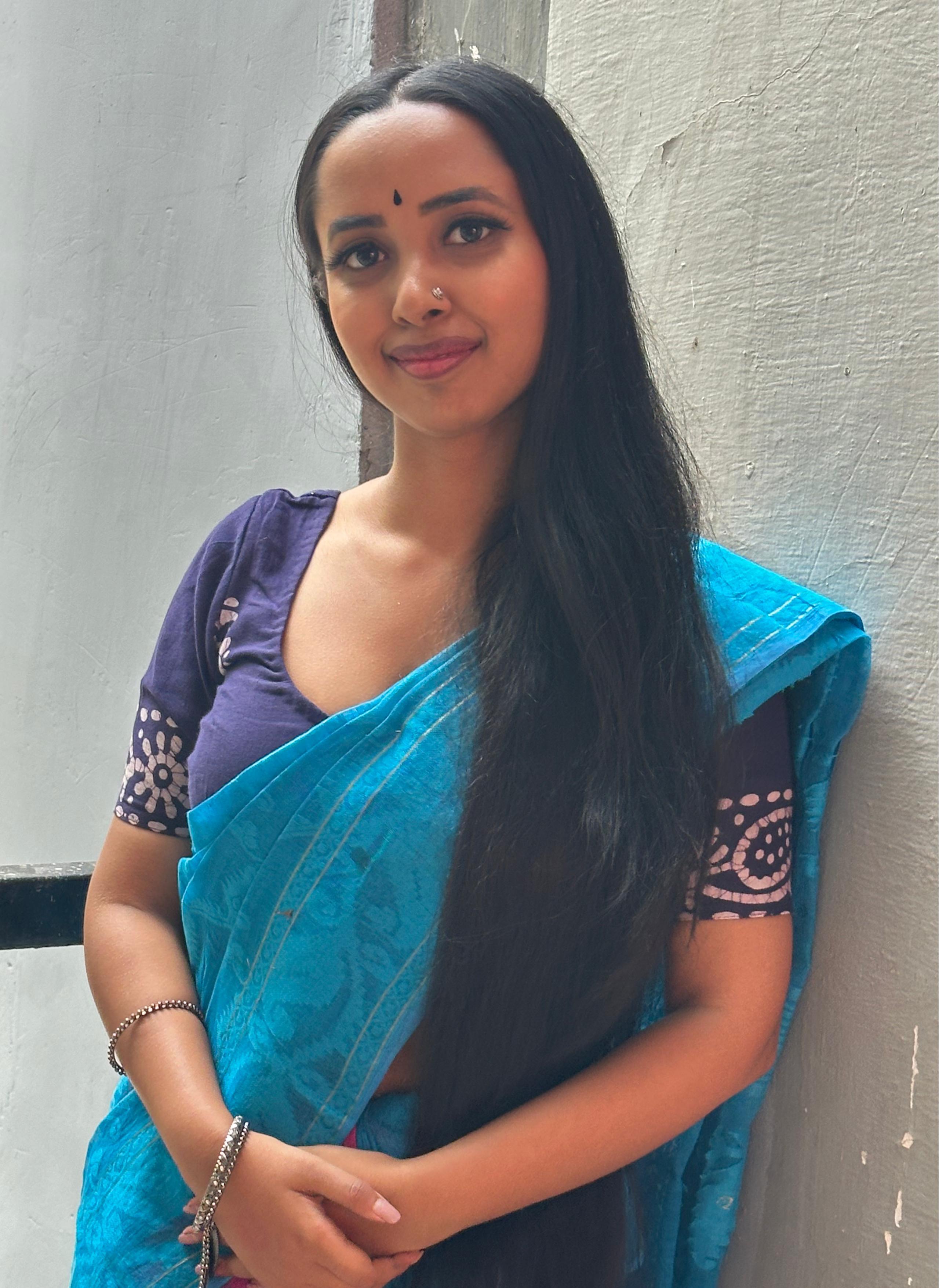
Mehak Banday/New Delhi
On 13 July, the audience in a jam-packed hall in Delhi’s India International Centre (IIC) was mesmerised by the two young Odissi dancers on the stage. Ann Afreen and Shimran Zaman were rendering a classical Odissi dance dedicated to Lord Krishna with poise and perfection.
The two Muslim women performing a classical temple dance were appreciated by the discerning audience. However, in real life, for Ann and Shimran, it wasn’t that simple to be a Muslim and have a smooth sailing while learning and performing a temple dance.
Afreen and Shimran are guru-behan (disciples of the same guru) as they learned Odissi from Guru Pravash Kumar Mohanty.
Shimran and I began learning Odissi together as children. We trained under the same guru, performed on the same stages, and shared the same passion for dance,” says Ann Afreen.
However, their lives took them in different directions. “I moved into filmmaking, sociology, and visual arts, while Shimran pursued law and in-depth research in performing arts. For years, we didn’t perform together. When we finally did it, it was not only as dancers but also as women who had lived and grown.”
The show, aptly named as DVI— “Two Paths, One Pulse” was a collaboration between the two dancers and their companies, Shreshtha L’Artiste Ballet House, founded by Afreen, and LASYAAYAN, founded by Shimran.
Speaking with this reporter, both narrated their stories of becoming Odissi dancers despite coming from Muslim families.
Ann Afreen:
.jpeg)
The Lucknow-born Afreen, who was raised in Delhi, says, “I didn’t start dancing because I was drawn to it—I started because of my health. As a child dealing with frequent illness, her parents encouraged her to take up an activity that would keep her active. That’s how she found herself, at six years old, stepping into her first Odissi class—not with excitement, but with reluctance.”
For a six-year-old Ann, Guru Pravash Kumar Mohanty’s commanding presence was daunting at first.
“The structure was strict, corrections were constant, and each class felt demanding. As a young child, it was intense and overwhelming. But something changed the day he taught her first basic steps.”. She said she understood something physically before she understood it mentally. That day marked a shift, and she never looked back.
Later, after his passing in 2011, Ann continued her training under his daughter, Pushpanjali Mohanty.
“Despite the backlash I was receiving from both within my community and from other religious groups, I never once was made to feel like I didn’t belong.”
She treated her with complete openness—never through the lens of religion, but always through the shared language of art. It was cultural, human, and generous. She made her feel welcome and at home in a space where others often questioned her presence. It’s because of her that she believes Odissi belongs to her just as much as it does to anyone else.
Through her guidance, I began to perform more widely and engage with legendary dancers across the Odissi field. She also prepared her for the University of Delhi’s ECA entrance, which became a crucial turning point in her academic and professional journey.
Throughout school and college, she performed regularly, at times doing more than 300 shows a year. I used to structure my semesters accordingly: one half for preparation, and the other for competition and performance. The prize money often covered her basic expenses and provided her with early financial independence.
During this time, I received several awards and performed for Doordarshan shows too.
However, being from a Muslim family, the journey wasn’t without challenges. While her parents were progressive and supportive, I still faced criticism—both from within her own community and from individuals across other religious communities. Questions around her right to perform a temple-rooted classical dance form became a recurring theme. Remarks like “Are you allowed to dance?” or “This is temple art—how do you justify it?” were often posed with undertones of judgment.
But I’ve always stood by this truth: Religion and culture are distinct. Odissi is not exclusive to any one faith—it is a part of India’s collective cultural heritage. As an Indian Muslim, I claim it fully. And I believe anyone born on this land, contributing to its culture, belongs just as much. The repeated attempt to mark classical Indian art as the territory of one faith is not just limiting—it’s historically inaccurate.
In college, I pursued Sociology for my undergraduate studies at JDMC. That choice gave her the theoretical lens to understand the social structures around art, gender, and identity. During her degree, I also held several leadership roles in college and was awarded the best all rounder.
She completed her Nritya Bhaskar from Pracheen Kala Kendra. During her undergraduate years, she wrote several articles exploring the intersection of performing arts and sociological theory.
“ I was particularly interested in how textiles and material culture intersect with dance aesthetics, stage presence, and historical narratives. I was constantly seeking ways to merge performance with research, using academic inquiry to enrich her artistic practice. I was no longer just a dancer—I was a student of systems, of media, and of movement.
.jpg) Ann Afreen and Shimran Zaman performing at IIC, Delhi
Ann Afreen and Shimran Zaman performing at IIC, Delhi
After she completed her Mass Communication degree from Jamia Millia Islamia, her work expanded beyond choreography. “I learned how to frame stories, how light and sound affect perception, and how to direct and produce narratives. I shifted from being in front of the camera to understanding what happens behind it.
“I’ve returned to performance—but on my terms. I no longer do a hundred shows a year. Instead, I focus on 1–2 productions annually, each carefully crafted and produced with cinematic elements—be it lighting, narrative flow, or audio layering.
Odissi remains her base, but her presentation now integrates her full range of training: storytelling, framing, soundscapes, and design. I don’t aim to modernize the art form superficially—I aim to reimagine how we experience it.
To young artists, I say this: Pursue your passion, but don’t neglect your perspective. Education gave her the language to question, media gave her the tools to build, and her identity gave her the clarity to stand firm. Her journey is not one of rebellion—it’s one of building, layer by layer, skill by skill.
I remain committed to growing not just as a performer, but as a creative leader, building structures where dancers don’t just perform—but create, direct, and lead.”
Shimran Zaman

Shimran Zaman’s experience as a Muslim is in contrast with Ann Afreen’s. “I don’t have a dramatic turning point story. Dance wasn’t something I discovered; it was something that always lived inside me. As a child, music would instinctively set my body in motion. Wherever there was rhythm, my feet would respond. I would twirl, sway, and move. At family weddings, while others mingled or ate, I would quietly find the stage, my little world, and start dancing, lost in the joy of it. That wasn’t performance. That was home,” said Shimran.
Her parents first noticed my deep connection with movement when they saw me dancing to the song Kaanta Laga in front of the television, completely immersed, trying to mirror each move with innocence and delight. That was when they considered formal training. And being from Odisha, Odissi naturally came into the picture.
Interestingly, she wasn’t excited about it at first. When they told her she would be going to an Odissi class the next day, she cried. I said I wanted to learn “movie dance,” not something classical. But my parents, true to who they are, didn’t push me. They simply said, “Try it once. If you don’t like it, you don’t have to go again.” She agreed reluctantly.
But that one day changed everything. Remembering her first class, she said, “My Guru Pravash Kumar Mohanty sat with poise and strength, conducting class with a commanding energy. I learned my first basic steps that day. And just like that, something clicked. I fell in love. I never said no to going again. There was no going back.”
That’s how her journey began, not just into dance, but into a way of life.
People often assume that as a Muslim girl, she must have faced significant struggles in choosing to pursue a classical art form deeply rooted in Hindu temple traditions.
Shimran’s parents, M.S. Zaman and Shaheeda Tayab, never made her feel like she had to choose between my religion and her passion.
“They raised me with values of inclusivity and respect for all faiths, all people. She celebrated Eid at home, but also Holi and Diwali with friends. She fasted during Ramzan, but also visited Durga Puja pandals and Ramlilas with joy and curiosity. There was never an “us” and “them.”
She was taught to be Indian first and be proud of it.
Still, while her home was a sanctuary of support, the world outside wasn’t always as accepting. She faced subtle hesitancies and resistance from both sides—from within the Muslim community, where some wonder why she chooses to perform a classical dance form like Odissi, and from certain circles in the Hindu community, where she still feels like a cultural outsider.
There are moments when she is made to feel like she doesn’t fully belong. But that has never stopped her, “Because this art—this dance—is mine”.
Sshe believes that if religion were meant to be a barrier in her path, the divine energy that gifted her this ability wouldn’t have chosen her.
“I experience divinity through dance. The stage is my temple, my masjid. When I dance, I perform ibadat. And there is no greater spiritual practice for me than that. I feel closest to that universal supreme energy, whether you call it Allah, God, or Jagannath—when I lose myself in rhythm and expression,” Shimran said.
A law graduate from Jamia Millia Islamia with a PG Diploma in Mass Communication from IGNOU, Shimran has completed her Master’s in Performing Arts from the World University of Design and now pursues her research as a scholar in the same field.
She brings academic rigour to her artistic expression—blending classical technique with innovative choreography, making her a compelling and evolving voice in India’s contemporary dance landscape.
“Academia transformed my relationship with dance. It helped me ask deeper questions—why we dance, how these forms came to be, and what they represent in today’s world. My Master’s dissertation was titled Art Beyond Belief, focusing on Muslim practitioners of Odissi and their contributions to this deeply ritualistic, temple-rooted dance form.” She explained.
It explored the subtle Islamic resonances within Odissi and challenged rigid notions of cultural ownership. That work is now being turned into a book—an overwhelming but exciting next step. She expresses immense gratitude to her Dean, Dr. Parul Purohit Vats, and her professor, Simerpreet Sokhi Sir, for encouraging her to give her research a larger platform.
“So no, my story isn’t filled with rebellion or dramatic challenges. But it is a story of quietly holding on to what I love, despite not always being seen as someone who “fits in.” Odissi has not just taught me to dance, it has taught me to pray, to think, to belong. And I hope my journey makes space for others like me, who are finding their way through the layers of identity, art, and belief.”
ALSO READ: Chopra's memories of seeing Afghans' joy at getting Jaipur foot
Shimran is Sangeet Bhaskar from Pracheen Kala Kendra and completed her Alankar from Akhil Bhartiya Gandharv Mahavidyalaya, a Grade B Doordarshan artist, Scholarship holder from CCRT, Ministry of Culture and recipient of the prestigious Sanjukta Panigrahi Excellence Award, Shimran has graced premier stages including the Konark Festival, International Odissi Dance Festival, Surajkund Crafts Mela, G20 Summits, and major cultural delegations to Russia, Colombia, Ecuador, and Malaysia.
